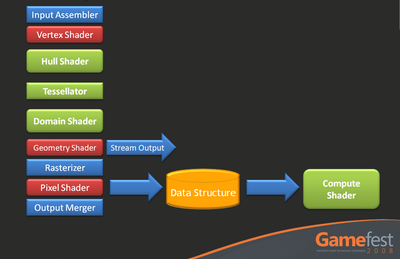The original article "OpenGL 3 & DirectX 11: The War Is Over" is published here:
http://www.tomshardware.com/reviews/opengl-directx,2019.html
And the following is my extract from this article appended with some my personal view point.
The war is over

OpenGL is gonna Lose.
OpenGL used to be better than DirectX, and at that time, DirectX was just the copy of OpenGL.
With each new version of D3D, it gradually began to catch up with OpenGL. And when DX8 in 2001, D3D introduced the VS and PS. From then on, OpenGL and DX changed their competition position.
OpenGL was more workshop-oriented. DX was more game-pc-oriented. Nvidia and ATI made game-pc cheaper and cheaper, and OpenGL can’t keep up.
OpenGL is a industry standard API, so it has to reach the agreement with many different, competing company, which is hard. Microsoft was working solely wit ATI and NVIDIA, and if there was disagreement, MS used its weight to cast a deciding vote.
Years ago, ARB’s inability slowed the development of OpenGL. So not until 2005 has OpenGL caught up with DirectX 9, which was lauched 3 years ago.
Therefore, in 2006, ARB passed OpenGL to Khronos, which had shown itself to be very effective in managing OpenGL ES, a 3D API for mobile peripherals.

The brand new OpenGL 3 was on Khronos’ schedule. There were two stages of OpenGL 3: Long peak and Mount Evans. Project Long Peak is to offer Shader Model 2 and OpenGL Lean and Mean, which 3DLabs had proposed years before. Project Mount Evans is to correct any faults in the new API and offer Shader model 4 features.

No more was heard of OpenGL 3 until August 2008 at the SIGGRAPH. What was worse, most of the new aspects of Long Peak had been completely abandoned.
“We discovered we couldn’t do one API to serve all”, said John Carmack, at the latest QuakeCon.
OpenGL 3 had been announced on August 11, 2008. It introduces many updated features beside the notion of profiles, for the moment there’s only one profile, with each profile supporting a different subset of functions. But it’s nothing more than an incremental update, it’s a far from what was promised.

The features offered by OpenGL 3 are pretty much the same as what D3D 10 offers.

DirectX is gonna Win.
With DirectX 10, Microsoft made the most sweeping revision of this API. Admittedly, the compatibility over all these ten years were beginning to handicap the evolution of this API, whose goal was to provide a sound foundation for future development.
However, MS is largely to blamed for DX didn’t really change much, and it was written exclusively for Vista and Xbox360, which greatly limited the number of existing computers that would be able to run a game.

What’s more, on the console market, DX 9 is still inside the Xbox 360.
DirectX 11 can be available on Windows 7, beside Vista.
Some developer decide skip DX10 and move directly to DX11.
Unlike OpenGL 3, every single new feature brought by DX 11 is incredible.
DX 11 starts treating patches but not triangle as primitive.

figure 1: Direct3D 11 pipeline diagram
Tessellation is now partial programmable in DX 11. You can pass the tessel factor from the Hull shader to the fix-function tessllator, and then the Domain Shader.
Computer Shader is in DX11, which performs the general purpose computing like NVIDA’s CUDA and Khrono’s OpenCL. Computer shader can runs on Nvidia, AMD, and the future Intel’s Larrebee.
DX11 support Multi-Threaded rendering or, multi-device rendering. Which quicken the real-time rendering.
DX11 improves Texture Compression. It will support HDR texture compression.
DX11 introduces Shader Model 5. This SM version’s greatest point is to make HLSL more Object-Oriented like. Virtual Function (Dynamic Branching) will be available in Shader Model 5.
Conclusion
OpenGL disappointed us by the API itself( with the disappearance of promised features, barely keeps up with D3D 10 ), and in the way it’s been handled( a year delay and the lack of communication ).
Nothing revolutionary is from Microsoft either, but at least D3D already has underwent a major revision of its architecture two years ago by D3D 10, and with no more compatibility handicap in the future, this revised API can keep on moving faster.
My view
The writer actually didn't say it clearly that who would win or who would lose. But we can sense his tone.
However, in my opinion, because of OpenGL’s well-based multi-platform features, OpenGL won’t sink into oblivion. But also because of the multi-platform, it is hard to meet the needs of every company, and definitely it is behind D3D and develops more slowly than D3D.
DirectX has developed very quickly these years after DX 9. Because of the revolutionary programmable shader in DX 9 has impacted us a lot, we have put too much expectation on Microsoft. We must admit that DX 10 and DX 11 have brought the Game Graphic Industry to an unbelievable new era.








 被折叠的 条评论
为什么被折叠?
被折叠的 条评论
为什么被折叠?


